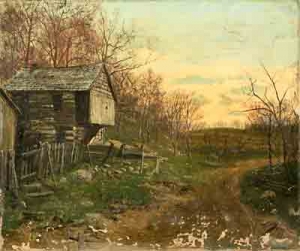Lunderman Farm
M1981.018.001
c. early 20th century
Wheat was the earliest and most important cash crop for settlers in Wisconsin. It was fairly easy to grow, allowing farmers to harvest two crops a year. The high rate of financial return made wheat an especially attractive crop for homesteaders during the middle of the 19th century. In fact at this time Wisconsin was considered “America’s breadbasket”. The early success of wheat farming helped Wisconsin’s agriculture develop more rapidly than it did in other states.
However, disaster struck in the 1860s, when tiny insects known as chinch bugs began devouring Wisconsin wheat crops. To meet these challenges, farmers began experimenting with a variety of alternatives to wheat. Feed crops, rather than cash crops, were better suited to Wisconsin’s soil and climate, and came to characterize the state’s agriculture in the late nineteenth century. – Wisconsin Historical Society

